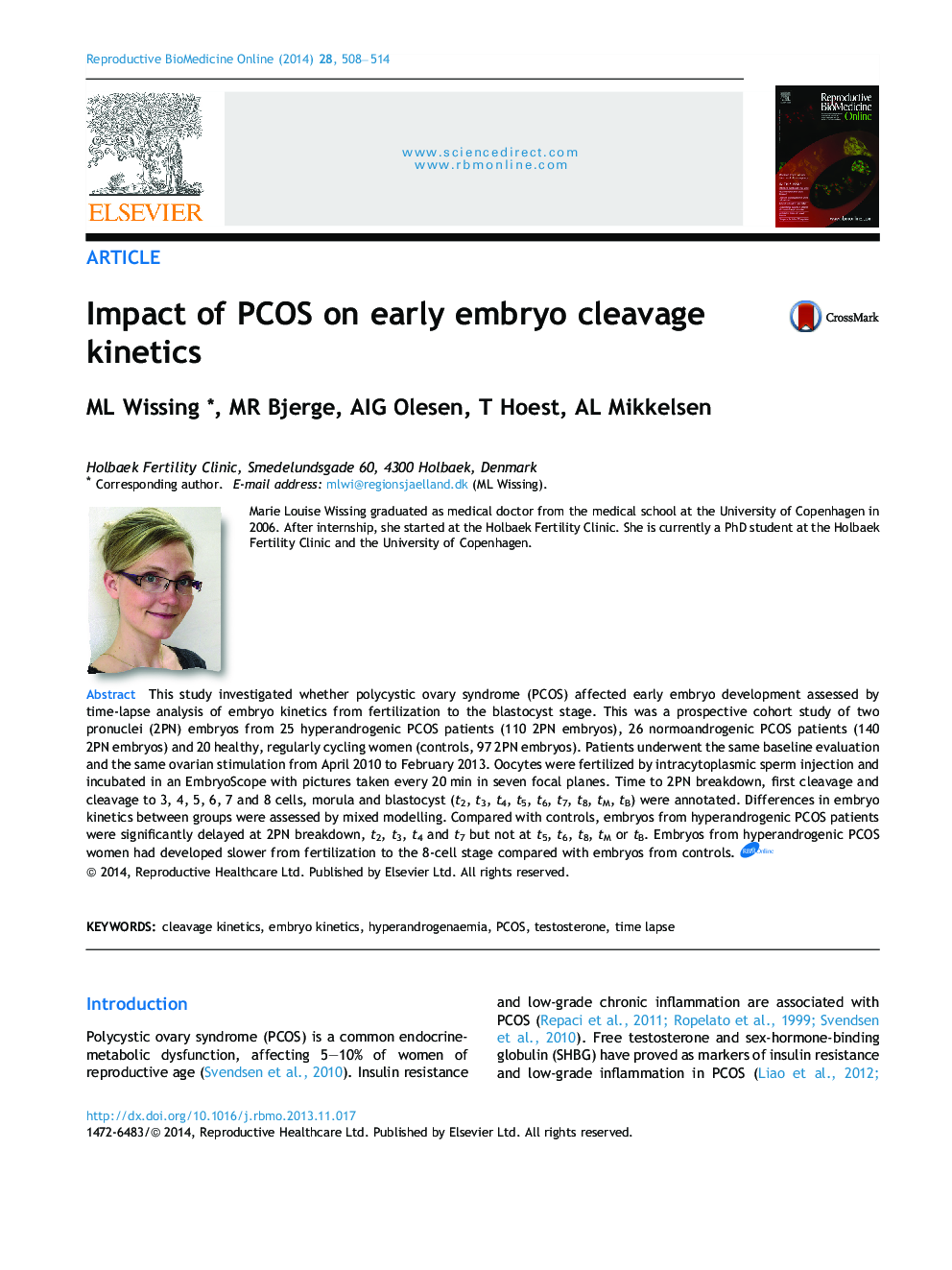| Article ID | Journal | Published Year | Pages | File Type |
|---|---|---|---|---|
| 3970205 | Reproductive BioMedicine Online | 2014 | 7 Pages |
This study investigated whether polycystic ovary syndrome (PCOS) affected early embryo development assessed by time-lapse analysis of embryo kinetics from fertilization to the blastocyst stage. This was a prospective cohort study of two pronuclei (2PN) embryos from 25 hyperandrogenic PCOS patients (110 2PN embryos), 26 normoandrogenic PCOS patients (140 2PN embryos) and 20 healthy, regularly cycling women (controls, 97 2PN embryos). Patients underwent the same baseline evaluation and the same ovarian stimulation from April 2010 to February 2013. Oocytes were fertilized by intracytoplasmic sperm injection and incubated in an EmbryoScope with pictures taken every 20 min in seven focal planes. Time to 2PN breakdown, first cleavage and cleavage to 3, 4, 5, 6, 7 and 8 cells, morula and blastocyst (t2, t3, t4, t5, t6, t7, t8, tM, tB) were annotated. Differences in embryo kinetics between groups were assessed by mixed modelling. Compared with controls, embryos from hyperandrogenic PCOS patients were significantly delayed at 2PN breakdown, t2, t3, t4 and t7 but not at t5, t6, t8, tM or tB. Embryos from hyperandrogenic PCOS women had developed slower from fertilization to the 8-cell stage compared with embryos from controls.We investigated whether polycystic ovary syndrome (PCOS) affected early embryo development assessed by time-lapse analysis of embryo kinetics from fertilization to the blastocyst stage. This was a prospective cohort study of two pronuclei (2PN) embryos from 25 hyperandrogenic PCOS patients (110 2PN embryos), 26 normoandrogenic PCOS patients (140 2PN embryos) and 20 healthy, regularly cycling women (controls, 97 2PN embryos). Patients underwent the same baseline evaluation and the same ovarian stimulation from April 2010 to February 2013. Oocytes were fertilized by intracytoplasmic sperm injection and incubated in an EmbryoScope with pictures taken every 20 min in seven focal planes. Time to 2PN breakdown, first cleavage, cleavage to 3, 4, 5, 6, 7 and 8 cells, morula and blastocyst (t2, t3, t4, t5, t6, t7, t8, tM, tB) were annotated. Differences in embryo kinetics between groups were assessed by mixed modelling. With mixed modelling, the ‘patient factor’ is adjusted for, as each patient contributed several embryos for analysis. Compared with embryos from controls, embryos from hyperandrogenic PCOS patients were significantly delayed at 2PN breakdown (P = 0.0128), t2 (P = 0.0061), t3 (P = 0.0171), t4 (P = 0.0017), t7 (P = 0.04) and but not at t5, t6, t8, tM or tB. We concluded that embryos from hyperandrogenic PCOS women developed slower from fertilization to the 7-cell stage compared with embryos from controls. The clinical impact of the embryo delay was unknown, since this study was not powered to detect differences in implantation and pregnancy rates between groups.
